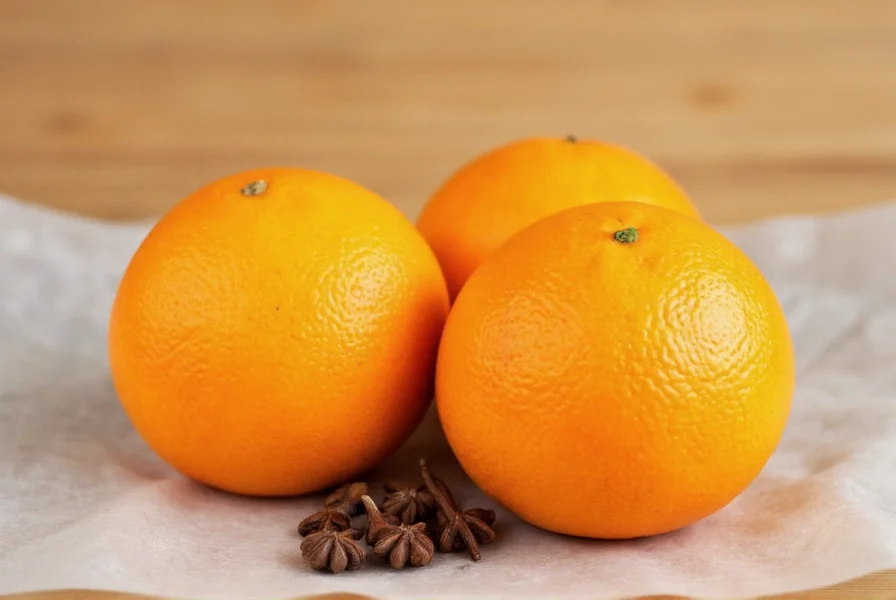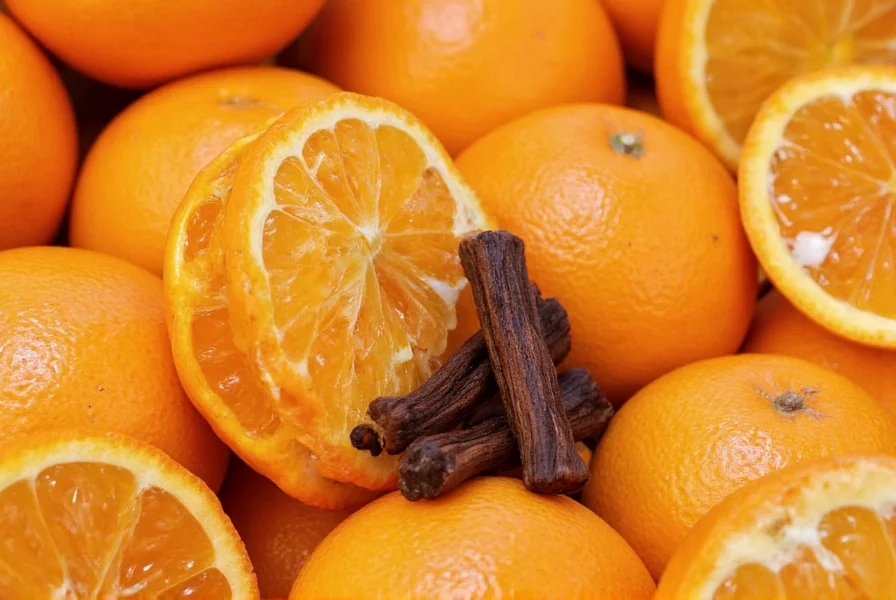For centuries, the pairing of oranges and cloves has been cherished across various cultures for its distinctive flavor and aromatic properties. This timeless combination creates a harmonious balance of bright citrus notes with warm, slightly sweet spice that elevates numerous culinary applications. The practice of studding oranges with cloves dates back to medieval Europe, where it served both as a natural air freshener and a symbol of hospitality during the holiday season.
Historical Significance of Oranges and Cloves
The tradition of combining oranges and cloves spans multiple continents and centuries. During the 16th and 17th centuries, when both ingredients were considered luxury items, wealthy European households would display clove-studded oranges as decorative elements during winter celebrations. These " pomanders " (from apple of amber) served dual purposes: they perfumed rooms and were believed to ward off illness during cold seasons.
In Victorian England, clove-studded oranges became popular Christmas decorations, often hung on trees or placed in bowls as natural air fresheners. Across the Atlantic, this tradition evolved into the "orange and cloves" Christmas decoration still practiced in many American households today. The practice also appears in various cultural traditions, including the Spanish custom of giving children "naranjas con clavo" during holiday celebrations.
Culinary Applications of Oranges and Cloves
The flavor synergy between oranges and cloves makes them ideal partners in numerous recipes. Their combination creates depth in both sweet and savory dishes while providing natural preservation qualities.
| Recipe Type | Preparation Method | Recommended Ratio |
|---|---|---|
| Mulled Wine/Cider | Simmer whole cloves with orange slices | 6-8 cloves per orange |
| Potpourri | Stud orange with cloves, dry for 2-3 weeks | 1-2 cloves per square inch |
| Preserves | Add whole cloves to orange marmalade | 3-4 cloves per pound of fruit |
| Baking | Infuse orange zest with ground cloves | 1/4 tsp ground cloves per orange |
Popular Recipes Featuring Oranges and Cloves
Creating authentic traditional mulled wine with oranges and cloves requires careful balance. The classic recipe involves simmering red wine with orange slices studded with whole cloves, along with cinnamon sticks and other warming spices. For optimal flavor extraction, gently score the orange peel before inserting cloves, allowing the essential oils to mingle with the wine.
Another beloved application is orange clove pomander decorations, which serve as natural air fresheners and holiday ornaments. To create these, select firm navel oranges, insert whole cloves systematically across the surface, and allow them to dry for several weeks. As they dry, they develop a potent, pleasant aroma that fills rooms with festive fragrance.
Chefs often use this pairing in citrus preserves with whole spices where the cloves enhance orange marmalade without overwhelming its bright flavor. The cloves should be removed before serving to prevent an overly intense spice note.
Health Benefits and Safety Considerations
While neither ingredient serves as a medical treatment, both oranges and cloves offer nutritional properties worth noting. Oranges provide vitamin C and antioxidants, while cloves contain eugenol, which has natural antiseptic qualities. When preparing homemade remedies with oranges and cloves, remember that whole cloves should never be consumed directly due to choking hazards.
For those exploring using oranges and cloves for natural air purification, the combination releases pleasant citrus-spice aromas that can freshen indoor spaces without artificial fragrances. However, individuals with sensitivities to strong scents should use this combination moderately.
Storage and Preparation Tips
When selecting ingredients for recipes combining oranges and cloves, choose firm, unblemished oranges with smooth skin for easier clove insertion. Whole cloves maintain their potency longer than ground cloves, making them preferable for most traditional applications.
For long-term storage of clove-studded oranges intended as decorations, place them in a cool, dry location away from direct sunlight. They typically require 2-3 weeks to fully dry while developing their characteristic aroma. Store dried pomanders in airtight containers when not in use to preserve their fragrance.

Seasonal Traditions Around the World
The pairing of oranges and cloves features prominently in various cultural celebrations. In the Netherlands, "kruidnoten" cookies often incorporate both ingredients. Scandinavian countries use this combination in traditional Scandinavian holiday beverages like glögg. In the southern United States, clove-studded oranges appear in holiday centerpieces as symbols of prosperity.
Understanding these cultural traditions involving oranges and cloves enriches our appreciation of how food traditions evolve and spread across regions. The enduring popularity of this pairing demonstrates how certain flavor combinations transcend time and geography to become beloved staples in culinary traditions worldwide.
How many cloves should I use when studding an orange for decoration?
For traditional pomander decorations, insert cloves approximately 1-2 cloves per square inch of orange surface. A medium-sized orange typically requires 60-100 whole cloves for full coverage. Space them evenly about 1/2 inch apart for the most visually appealing result.
Can I use ground cloves instead of whole cloves in mulled wine?
While whole cloves are preferred for mulled wine as they're easier to remove and provide more controlled flavor, you can substitute ground cloves using a ratio of 1/4 teaspoon ground cloves for every 8-10 whole cloves. Add ground cloves early in the simmering process and strain thoroughly before serving.
How long do clove-studded oranges last as decorations?
Properly dried clove-studded oranges can last 1-2 years as decorations. The drying process typically takes 2-3 weeks at room temperature. Once fully dried, store them in a cool, dark place. Their fragrance will gradually diminish over time but can be refreshed with a few drops of orange and clove essential oils.
What's the best orange variety for studding with cloves?
Navel oranges work best for studding with cloves due to their thick skin, firm texture, and easy-to-handle size. Their smooth surface allows for even clove placement, and they hold their shape well during the drying process. Avoid overly ripe oranges as they may become too soft for proper clove insertion.
Frequently Asked Questions
How many cloves should I use when studding an orange for decoration?
For traditional pomander decorations, insert cloves approximately 1-2 cloves per square inch of orange surface. A medium-sized orange typically requires 60-100 whole cloves for full coverage. Space them evenly about 1/2 inch apart for the most visually appealing result.
Can I use ground cloves instead of whole cloves in mulled wine?
While whole cloves are preferred for mulled wine as they're easier to remove and provide more controlled flavor, you can substitute ground cloves using a ratio of 1/4 teaspoon ground cloves for every 8-10 whole cloves. Add ground cloves early in the simmering process and strain thoroughly before serving.
How long do clove-studded oranges last as decorations?
Properly dried clove-studded oranges can last 1-2 years as decorations. The drying process typically takes 2-3 weeks at room temperature. Once fully dried, store them in a cool, dark place. Their fragrance will gradually diminish over time but can be refreshed with a few drops of orange and clove essential oils.
What's the best orange variety for studding with cloves?
Navel oranges work best for studding with cloves due to their thick skin, firm texture, and easy-to-handle size. Their smooth surface allows for even clove placement, and they hold their shape well during the drying process. Avoid overly ripe oranges as they may become too soft for proper clove insertion.











 浙公网安备
33010002000092号
浙公网安备
33010002000092号 浙B2-20120091-4
浙B2-20120091-4